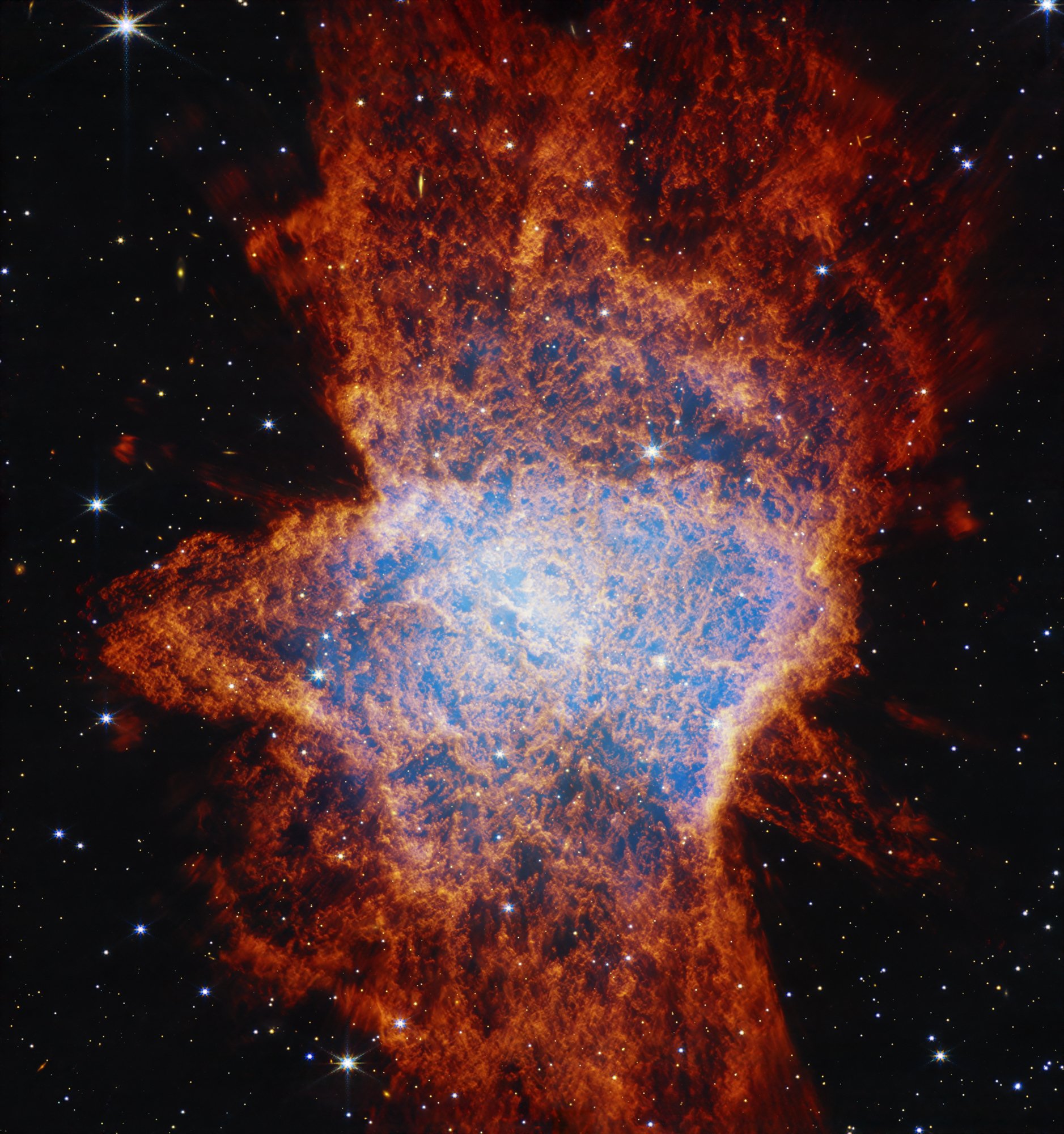Astronomers using the James Webb Space Telescope (JWST) have unveiled intricate details of the NGC 6072 nebula, located approximately 3,060 light-years away in the southern constellation Scorpius. High-resolution images from the telescope reveal complex structures and patterns that could enhance understanding of stellar evolution as low-mass stars transition into their final phases.
Planetary nebulae form when aging stars expel gas clouds at the end of their main-sequence phase. While many nebulae exhibit circular or elliptical shapes, NGC 6072 presents a more chaotic form that challenges these conventional classifications. The images captured by JWST’s Near-Infrared Camera (NIRCam) and Mid-Infrared Instrument (MIRI) highlight this nebula’s unique attributes, showcasing a vibrant and complex arrangement of gas and dust.
Unraveling Nebula Complexity
The preliminary analysis of NGC 6072 indicates a central core that glows brightly in a light blue hue, surrounded by elliptical outflows. This configuration suggests a multi-polar structure, with gas and dust lobes intersecting at nearly vertical angles. A third lobe extends horizontally, forming an equatorial plane. This arrangement hints at interactions that may involve multiple stars at the nebula’s center, possibly indicating a younger companion star alongside an aging primary.
The central region is filled with dark pockets bordered by orange material, which transitions to red as distance from the core increases. This gradient is consistent with the cooling effect of expanding gas and dust as it moves away from the hot core. The data supports the theory that at least two stars are responsible for the nebula’s formation and structure.
Insights into Stellar Lifecycles
The MIRI data adds another layer to the understanding of NGC 6072, revealing a web-like structure formed by the outflows of dust. A pinkish-white dot in the images likely represents the central star, with concentric rings radiating outward from this point. These rings could suggest the presence of a secondary star, potentially orbiting the older star and creating ripples in the surrounding material.
Alternatively, these rings might result from periodic pulsations in the outflows, where gas and dust are expelled at intervals of around 1,000 years. The contrasting representations of cool gas from the NIRCam (shown in red) and hot ionized gas from the MIRI (shown in blue) illustrate the varying temperatures and compositions within the nebula.
As the central star of NGC 6072 continues to cool, the nebula is expected to dissipate into the interstellar medium (ISM), contributing heavier elements essential for the formation of new stars and planetary systems. Understanding planetary nebulae is a primary objective for the JWST, which aims to provide deeper insights into the lifecycle of stars and their environmental impacts.
This research not only expands knowledge about stellar evolution but may also inform predictions about the future of our own Sun when it eventually reaches the end of its lifecycle, billions of years from now. The findings from NGC 6072 highlight the JWST’s potential in astrophysics, promising to reshape current understanding of cosmic phenomena.







































































